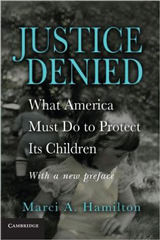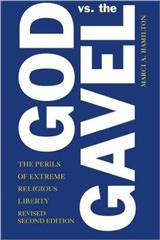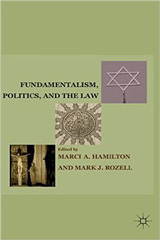The Supreme Court, in its 5-4 decision today in Shelby v. Holder, invalidated Section 4(a) of the Voting Rights Act (VRA), which establishes a formula to be applied to identify jurisdictions that must obtain preclearance before they change their voting practices. Predictably, there is now a great hue and cry over the Court’s allegedly disastrous reduction in guarantees of civil rights, but this is a drastic overstatement of both the Court’s decision and its likely fallout.
The Voting Rights Act of 1965 was the legislation that the United States needed to end the outrageously discriminatory voting practices that had flourished following the ratification of the Reconstruction Amendments. The Fourteenth and Fifteenth Amendments should have restricted rank discrimination against minorities, but in practice, they did not, with numerous Southern states seemingly competing to find the most ingenious ways in which to ensure that African-Americans and members of other minorities would not be able to vote, no matter how hard they tried. There were poll taxes, literacy and knowledge tests, moral-character requirements, and language proscriptions.
Section 2 of the VRA, which is untouched by today’s opinion, forbids any “standard, practice, or procedure . . . imposed or applied . . . to deny or abridge the right of any citizen of the United States to vote on account of race or color”.
The Shelby decision, written by Chief Justice John Roberts, instead, reaches a holding solely on Sec. 4(a), which establishes a “coverage formula” that is to be used, pursuant to Sec. 5, permitting the federal government to demand preclearance of voting practice changes in a covered jurisdiction. The Supreme Court did not invalidate Sec. 5, but it did invalidate the coverage formula of Sec. 4(a). That formula defines the “covered jurisdictions” as States or political subdivisions that maintained tests or devices as prerequisites to voting, and had low voter registration or turnout, in the 1960s or 1970s.
Anyone operating with ordinary common sense would read this formula in 2013 as odd. We have made huge strides on discrimination in voting and on voter registration and turnout for minorities in the last 50 years. If we had not, it would have been very depressing.
The majority essentially asks the following question: Why are we now imposing federal oversight of local and state elections using statistics from decades ago? The majority concluded that Congress may not lay such burdens on the states without more updated information, and then pointed to statistics, arrayed in a chart, that show the dramatic improvement in voter registration between 1965 and 2004, which is apparently when we have the most recent reliable numbers. The gap between white and black voters in 1965 in Deep South states ranged from 23% to 63%. In other words, in 1965, 23% to 63% more white voters were registered than were black voters. In 2004, that range was reduced to -3.8% to 4%. That is a reduction in discrimination that should make us proud (without, however, concluding we have conquered the beast entirely.)
The dissent in the VRA case, written by Justice Ruth Bader Ginsburg, disagreed with the majority, because it relied upon the facts, which are also true, that there continues to be discrimination, and that discrimination is more subtle today. Therefore, the dissent would have preserved Sec. 4(a), because of the existence of ongoing discrimination. The majority, too, does not disagree that discrimination continues to be real.
So where, exactly, do the majority and dissent disagree? : On the approach to be taken by the federal government vis-à-vis the states. The majority rests its decision on the constitutional principle that the states have the power to run elections, and the point that the federal government is not permitted to impose the extraordinary restrictions of the Voting Rights Act unless it is redressing extraordinary burdens on discrimination. And, more importantly, the majority holds that current restrictions must be based on current facts. Therefore, the Court did not hold that 4(a) is unconstitutional per se, but rather that it is not tethered to current facts, leaving open the door for Congress to re-enact a new formula, which will then define covered jurisdictions based on current facts.
The primary objection to the majority’s approach appears to be that our politically-fractured Congress is so dysfunctional that it is incapable of gathering such facts and enacting a new Sec. 4(a) formula. There is also the assumption that the Republicans will simply block any regulation that aids in reducing discrimination against minorities, because they have become the party of intransigence and oppression.
First, neither of these objections justifies a failure to abide by the Constitution’s structure. Second, surely the Republicans understand at this point that they have been branded as intolerant, and even misogynist, and that they are in desperate straits with respect to minorities. There is no winning formula for them that includes opposing fair voting procedures for minorities.
No political party in 2013 can fail to embrace the project of ensuring discrimination-free elections in the states, particularly where those states have practiced subtle and not-so-subtle race discrimination. In this case in particular, Shelby County does not have the purest record, by a long shot, but it won on the constitutional principle. This is an opportunity for Republicans and Democrats alike to endorse civil rights and to stand up for fair voting procedures for all Americans based on current reality. Seems like a no-brainer to me.










What about the point made by the dissenters that the decision was activist, and that Congress rather than the Court should decide what coverage formula to use?